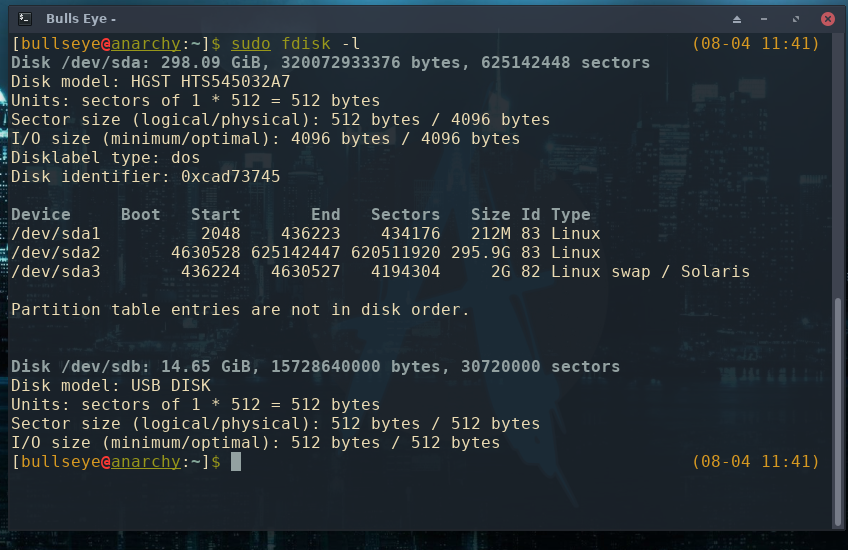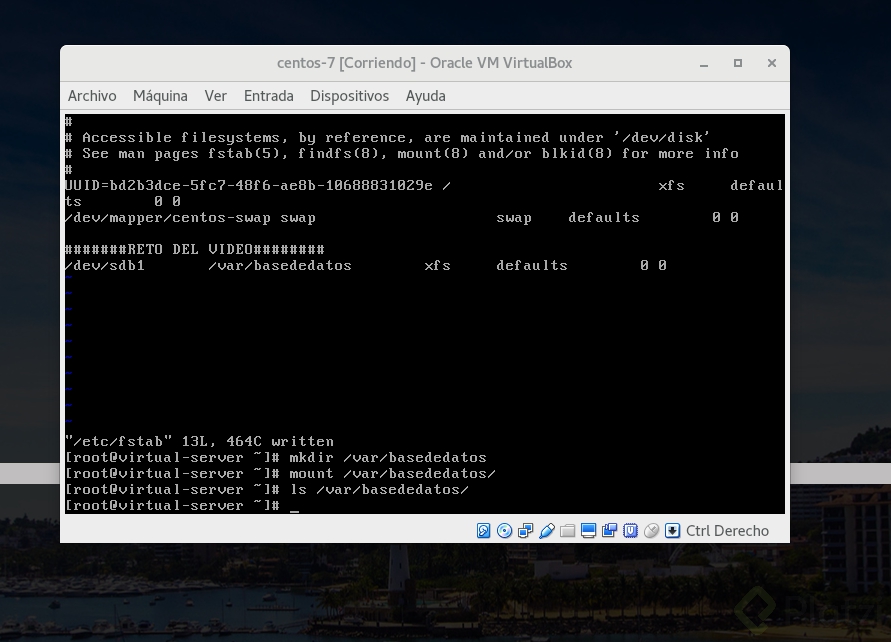
When I select and try to format the drive I get. I’m hoping to use what I learn here to build an OKD4 on brare metal. I am trying to format a drive using the Ubuntu Disks utility. I’ve added this section to my ignition file: I used it on my Fedora 33 workstation to take the training.

dev/vda is still a raw partition.Īny idea what is going on? I’ve thought that maybe the target platform “metal” was to blame but that isn’t the case. I’ve booted to a rhel 8 rescue image using the same pxeboot system. You might have an invalid partition table if you notice either of the following symptoms when using GParted: GParted shows the entire disk device as unallocated.
#Using wipefs code#
“Error saving partitions from /dev/vda” this is due do a “generic I/O error” and the error code is error 22.

The coreos-installer cannot read /dev/vda. You don't want to be able to wipe a filesystem which the kernel has mounted.

First change: You can no longer wipe a mounted filesystem, eg: mount /dev/sda1 /foo wipefs -a /dev/sda1 fails with: /dev/sda1: probing initialization failed: Device or resource busy That is obviously NOT a bug. wipefs can erase filesystem, raid or partition-table signatures (magic strings) from the specified device to make the signatures invisible for libblkid.
#Using wipefs install#
MENU LABEL Install Fedora CoreOS Default (vda) One is not a bug, the other seems to be a bug. When I try installing CoreOS to a libvirt VM using the below pxelinux entry, I get an error message from the coreos-installer utility. I’m able to boot into an emergency environment. I added a path to the initrd file and the root filesystem image. The same command can erase filesystem, raid or partition-table signatures/metadata. You can view such partition-table signatures/metadata/magic strings using the wipefs command.
#Using wipefs drivers#
parted /dev/sdb mkpart primary fat32 1049K 15.After much experimentation, I have CoreOS mostly working via tftpboot. The metadata used by operating system to configure disks or attach drivers and mount disks on your system. # Now we know only 1 partition exists on /dev/sdb It was also easy, from there to create new partitions, in a straight-forward way. I found f3probe ( ) solved the problem of deleting all the partitions, quickly and easily, working with large capacity drives, and created exactly 1 partition spanning the whole drive, which was easy to delete.
#Using wipefs software#
That deleted the partition but some partitioning software apparently found the partition backups automatically. I wanted to do the same thing (except in Slackware 14.2) but found I could not effect most of the solutions proposed here, with the most elaborate and well-documented solution creating new problems for making replacement partitions. (If you want to wipe the extended partition table, you'll need to know more about the operating system different operating systems do extended partitions in different ways.) The primary partition table within the MBR (so, not talking about GPT here) is located 446 bytes in, so we instruct dd to seek 446 bytes in before writing.Įxtended partitions are generally created by using a primary partition slot to point at the extended partition table, so if we erase the 4 primary partitions, we effectively wipe the extended partition table as well the OS won't be able to find it, so it won't be able to read and interpret it. Here, we tell dd to write 64 blocks (or bytes, because of our bs=1 parameter), since the primary partition table consists of 4 16-byte partition entries, for a total of 64 bytes. However, we need to address things more precisely than that, so we tell dd to use a block size of 1 byte.

The default block size may be 512 bytes, 1024 bytes or 4096 bytes, depending on your system. Here, we specify which device we're writing to. Here, we specify that we're reading from /dev/zero, which is a special device which emits NUL bytes-zeros. It's the simplest flexible tool for this job. Now, there may be a new treatment option out there for men who suffer from it: Benzocaine wipes may help men with premature ejaculation last longer in bed, a new study presented at the American. This standard command copies bytes from a source and writes them to a destination. Examples (TL DR) Display signatures for specified device: sudo wipefs /dev/sdX Wipe all available signatures for specified device: sudo wipefs -all /dev/sdX Perform dry run: sudo wipefs -all-no-act /dev/sdX Force wipe, even if the filesystem is mounted: sudo wipefs -all-force /dev/sdX tldr. dd if=/dev/zero of=/dev/ bs=1 count=64 seek=446 conv=notrunc If we're talking about MBR-style partitions.


 0 kommentar(er)
0 kommentar(er)
